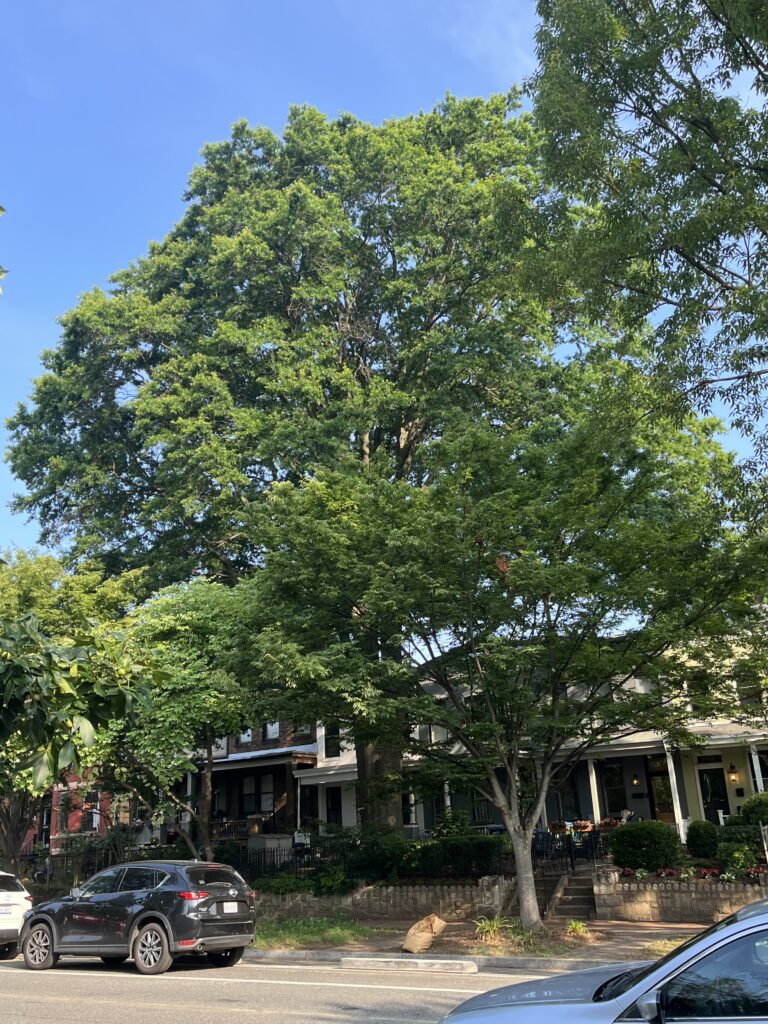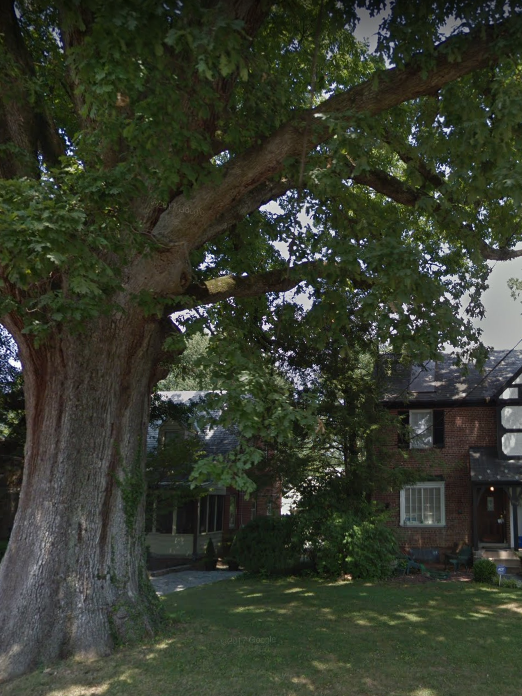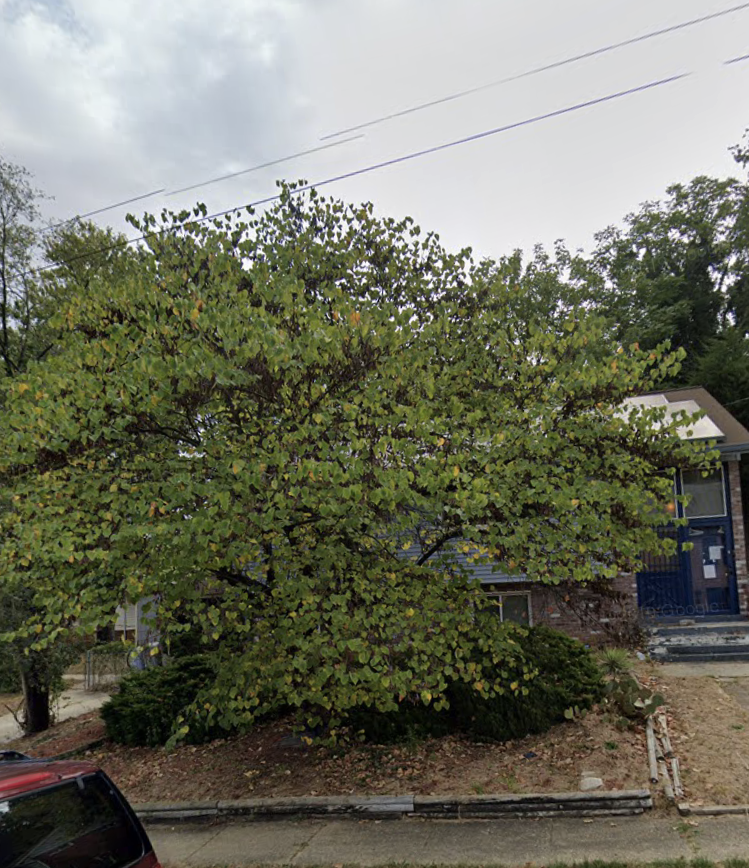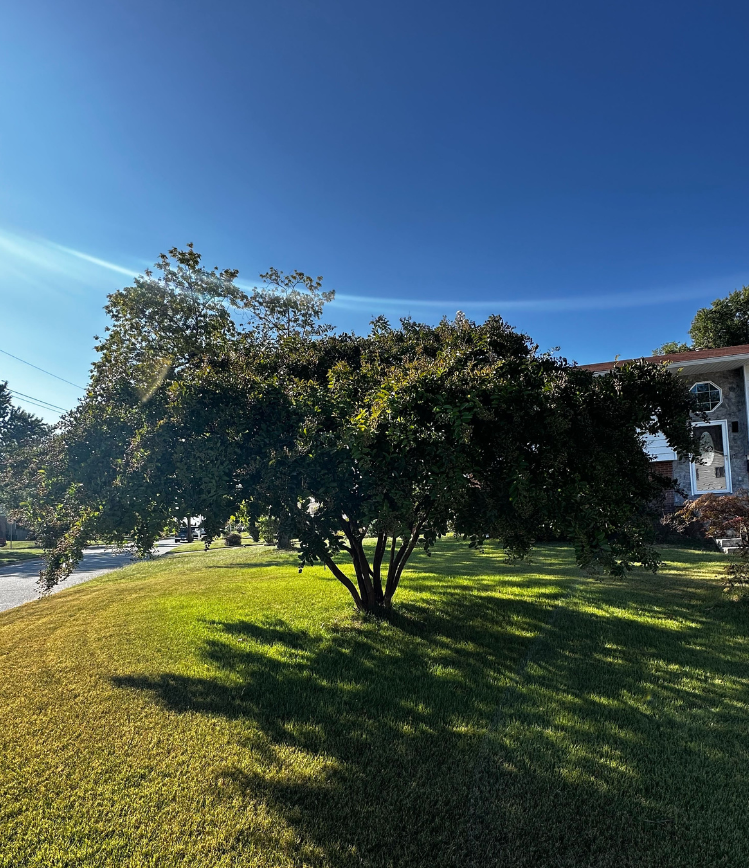THE LEAFLET

Mythbusting: The “Big Tree” Myth
At Casey Trees, we receive countless requests for tree plantings each year, many from homeowners. Last year we planted over 5,000 trees – our largest amount ever in a year. But through those requests for trees, we encounter a few homeowners who are skeptical about planting, or homeowners who have biases, uninformed beliefs, or just outright wrong ideas about the trees that will be planted in their yard.
Our foresters and crew have heard it all, and throughout the years, they have noticed some common themes. We’ve compiled a short list of the most common myths homeowners have about trees. And we’re here to share some better information and shed some light on the subject. This month of September, we kickoff a 5-part “mythbusting” series on residential tree planting.
For this first week, we address what is likely the most common myth – that a tree can be “too big” for a property. This often leads homeowners choosing to plant smaller species trees in their yards, or not plant a tree at all. To bust this myth, we turn to Kent Greene, ISA certified arborist and an Urban Forestry Foreman at Casey Trees:
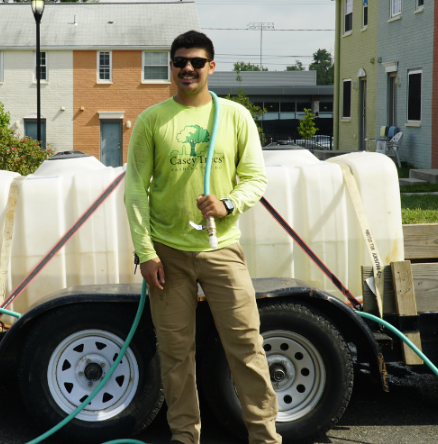
Kent Greene, Urban Forestry Foreman
As a Foreman for the Tree Operations department of Casey Trees, one of my duties is to respond to tree requests—often this entails answering many questions about trees. This could be a wide range of questions from “is my tree alive?”, or “what’s the best thing I can do to keep my tree healthy?”
One of the most common questions I get when consulting to plant a tree is “won’t this tree be too big for my yard?”. We know why this question gets asked so often – because when people see a large tree the mind can immediately jump to tree failures (falling branches), where a larger tree can mean larger issues.
But our job is to make sure we avoid these issues —which starts with proper tree selection. We strive to maximize the canopy in a selected space—after careful consideration of a potential planting space with the homeowner, we select species that will likely thrive in that space because a happy tree will not be likely to fail. This also means surveying obstacles that the tree would have to grow with in its lifetime such as structures, power lines, and utilities. We also strive for good tree maintenance and structural pruning to eliminate future issues of trees we plant.
The perception of a big tree can also be interpreted in a few ways – a heritage size oak, for example, looks large from afar, but likely would have little impact in your yard space because the trunk would be the only portion of the tree you’d have to contend with on a daily basis (meaning maybe a 3-6 foot diameter section in your yard would be impacted). This means relatively little yard space is needed while still enjoying the benefit of a large and high canopy well above your property (75-100 feet tall). The little yard space needed, and an out-of-the-way large canopy makes it a good choice for success in many yards in the city without much impact and interaction to structures and obstacles.
How does this compare to a mature Crape Myrtle or Redbud – very commonly planted (and not “large”) tree species? These tree species certainly are not perceived as “large”, but they require much more yard space (maybe 6-10’ diameter of yard space or more needed for these species). Additionally, their height (20-30 feet) puts the main part of the canopy in prime locations for interaction with gutters, windows, roofs, fences, etc. We see more issues with these smaller trees impacting structures than any large canopy tree such as elm, oak, or maple.
In short, big isn’t bad. It’s all about the right tree in the right spot. People may shy away from large trees because of the perception of risk and go with a smaller and potentially problematic tree in a space where a large tree will likely give them less hassle and headaches.
And for our Urban Foresters on staff, the universal answer is almost always “the bigger the better,” because a bigger tree means more shade, more benefits to the property, more canopy for our city, more resources for wildlife, and more ecological benefits for our urban environment. This ultimately helps us make larger leaps towards our city’s goal of 40% canopy – and homeowners can be a part of that.
Casey Trees plants free trees for DC residents. This includes a free consultation with our certified arborists to choose the tree or trees that are right for your yard. Schedule your free consultation today!
